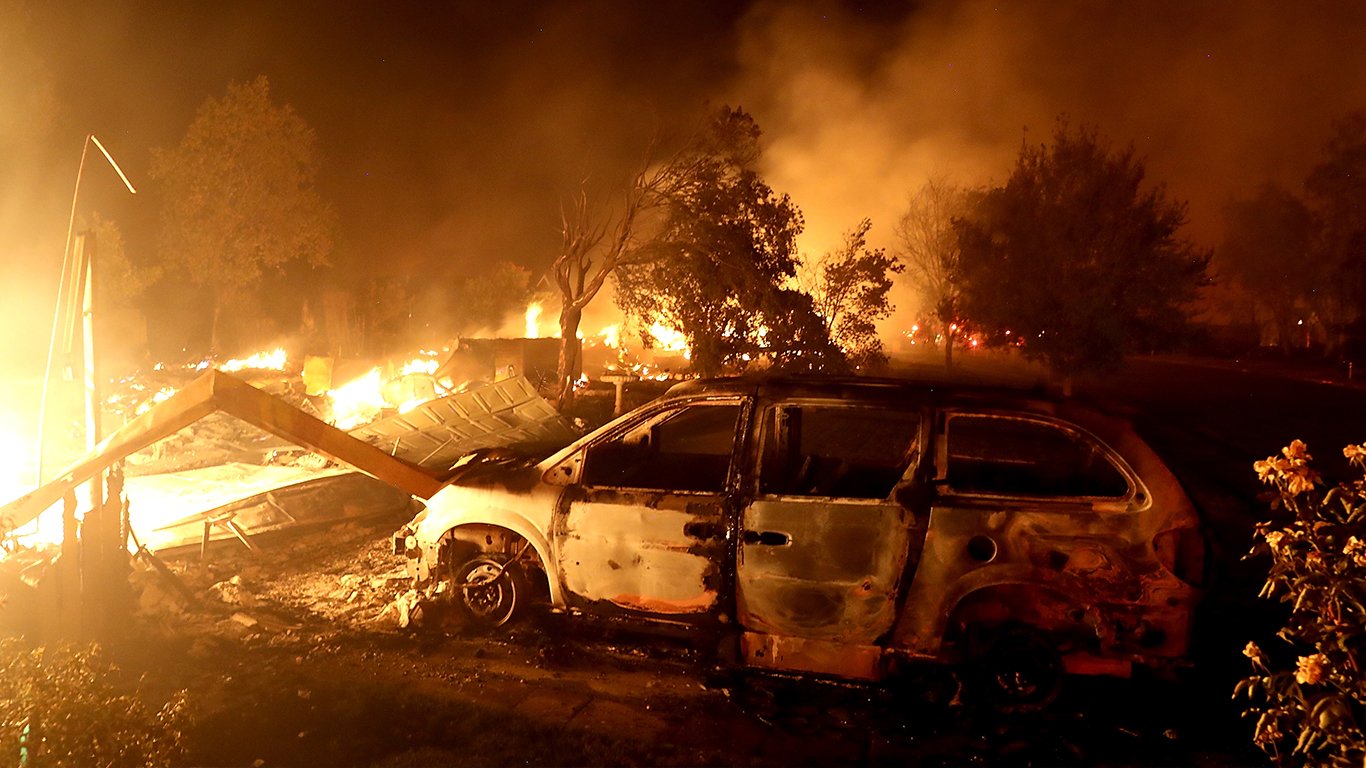

The U.S. wildfire season got off to an early start this year and hot weather in the West last week has made a bad situation even worse. As of Saturday, August 11, the National Fire Information Center (NFIC) reported wildfires had burned more than 5.58 million acres, an area roughly the size of New Jersey.
This year’s fires have burned about 28% more area than the 10-year average for the year to date of 4.36 million acres. Six new large fires were reported Saturday, and the total number of fires now burning has risen to 103.
California has been hardest hit. Nearly 650,000 have burned in large fires, with nearly half those acres ravaged by the Mendocino complex fire in northern California that has torn through more than 312,000 acres to become the largest fire in the state’s history. The Carr fire, also in northern California, has burned about 191,000 acres and destroyed more than 1,000 homes.
More than 30,000 firefighters are battling the blazes, including 138 dispatched from Australia and New Zealand to help out with fires in northern California and the Pacific Northwest.
As of Saturday morning, the state fire protection agency reported that the Mendocino complex fire is 67% contained and the Carr fire is 57% contained. The Carr fire, near the city of Shasta, has claimed eight lives so far. In Alaska, where nearly 270,000 acres are burning in 17 fires, the NFIC reports that containment is zero.
The other hard-hit state is Oregon where more than 170,000 acres have burned. The state’s largest fire, the Taylor Creek blaze just west of Medford, has torched more than 43,000 acres.
Sunday’s fire weather map shows a large upper-level trough moving east through the northern Rockies into the Dakotas. A surface front is expected to strong winds over the northern Plains, and critical fire weather is likely to develop over the western Dakotas according to the National Weather Service. Critical fire weather conditions are also likely to develop in north-central Montana and in parts of Idaho and southwestern Montana.
Over much of the western United States, fire conditions typically do not ease until October, when the weather cools, and rain and snow begin to have an effect on the fires.
Sponsored: Want to Retire Early? Start Here
Want retirement to come a few years earlier than you’d planned? Orare you ready to retire now, but want an extra set of eyes on your finances?
Now you can speak with up to 3 financial experts in your area for FREE. By simply clicking here you can begin to match with financial professionals who can help you build your plan to retire early. And the best part? The first conversation with them is free.
Click here to match with up to 3 financial pros who would be excited to help you make financial decisions.
Thank you for reading! Have some feedback for us?
Contact the 24/7 Wall St. editorial team.



